Reunion
Chad to Rhine Common Design Issue
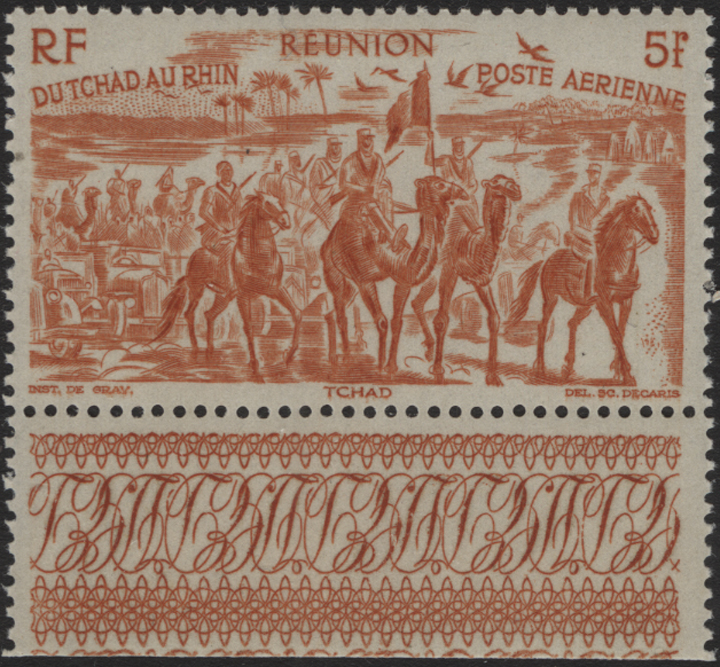
After he consolidated Free French control of Cameroun, Equatorial Africa and Gabon, Leclerc
established a base for raids against Italian controlled Libya at Fort Lamy (N'Djamena), Chad.
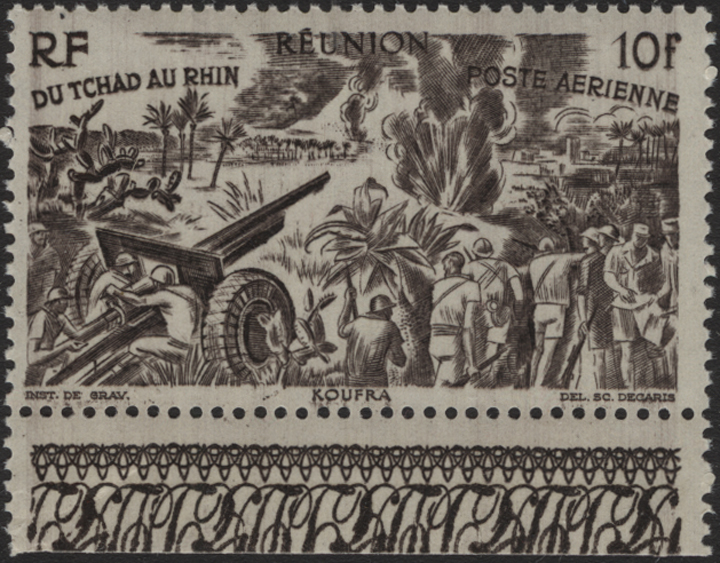
On March 1, 1941 over 300 Italians and Libyans at Koufra surrendered to 30 Frenchmen under the command of Leclerc
who raised the French flag with the Cross of Lorraine celebrating Free France's first victory of the war.
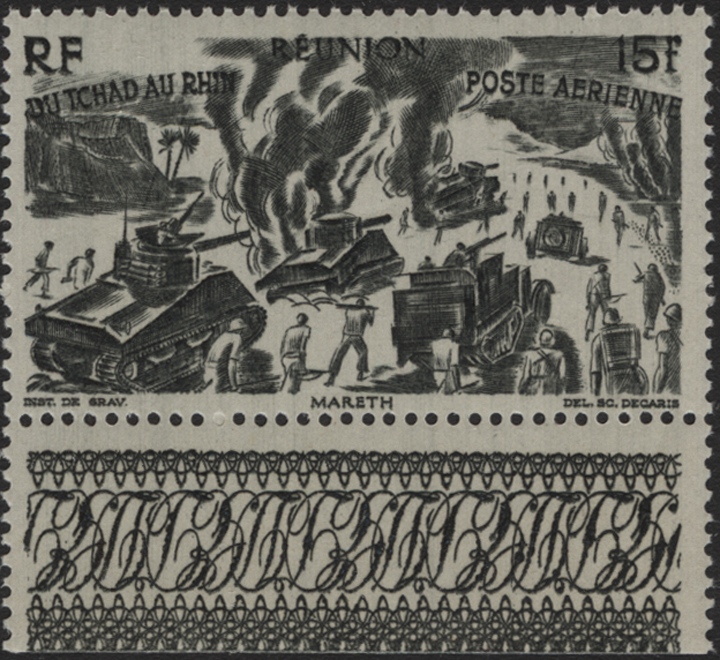
Guarding the British flank at some mountain passes known as Ksar Rhilane along the Mareth line in Tunisia, Leclerc
lured the Germans into his hidden guns and repulsed them with great losses on three occasions before, at last, the enemy retreated.
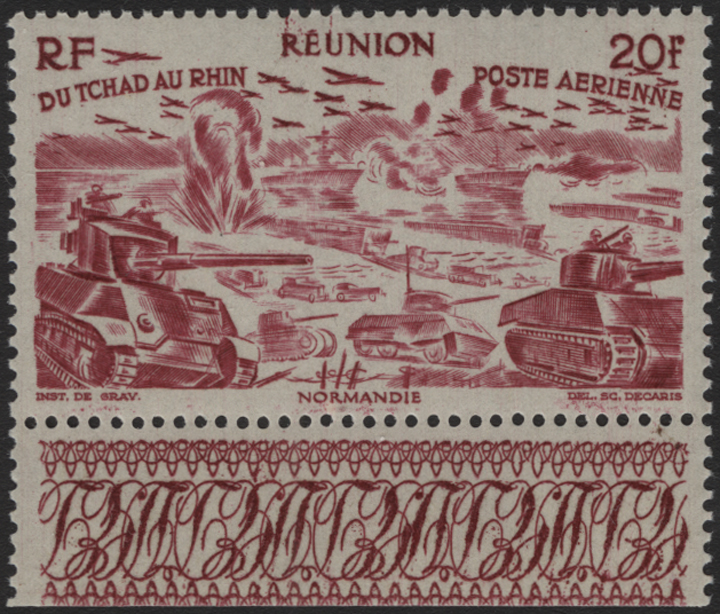
Leclerc's Free French Second Armoured Division debarked at Normandy on August 1 and took
part in the drive to Alençon and Argentan by U.S. General George S. Patton's Third Army.
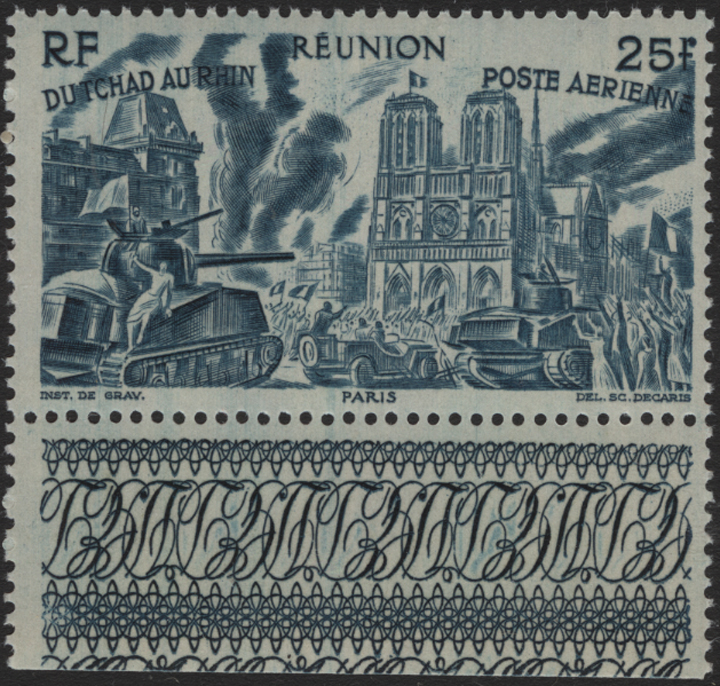
On August 20 the Second Armoured Division was ordered to liberate the French capital and five
days later the German commander in Paris, Dietrich von Choltitz, surrendered to Leclerc.
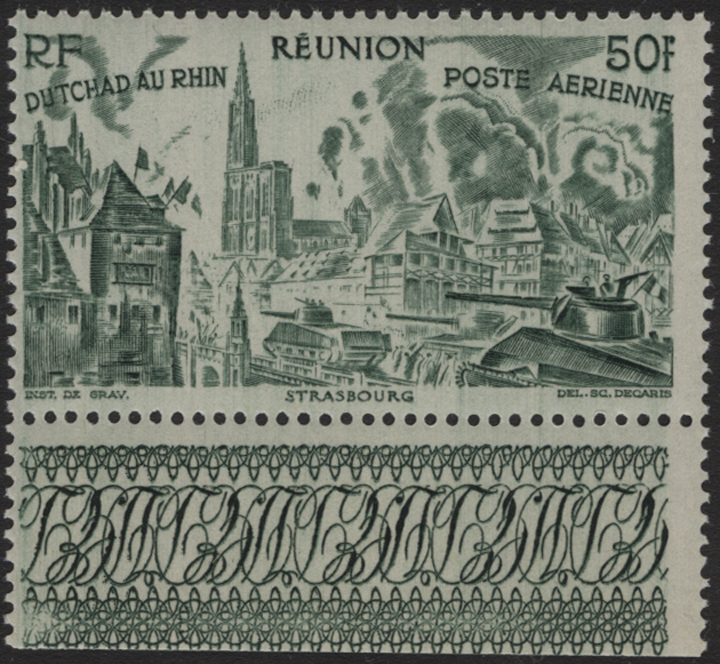
On November 23, 1944, units of the French 2nd Armored Division under General Leclerc
entered Strasbourg and raised the Free French tricolore over the cathedral at 2:30 pm.
With its Chad to Rhine issued on June 6, 1946, Reunion joined fourteen other French colonies in honouring the march of General Jacques Leclerc's forces (that would become the French Second Armoured Division) from Chad to the liberation of Strasbourg. Born Philippe Francois Marie de Hauteclocque, the French army officer adopted the name Leclerc when, after the fall of France, he escaped to England to join the Free French. Sent to Nigeria, he was successful in bringing Cameroun and French Equatorial Africa and, eventually Gabon, into the Free French sphere. Establishing his base in Chad, he led raids into Italian controlled Libya beginning on December 21, 1940 and culminating with the first Free French victory of the war at Koufra where over 300 Italians and Libyans surrendered to 30 Frenchmen. On March 1, 1941, Leclerc asked his men to swear the famous "Oath at Kufra" not to put down their weapons until the French flag flew again over the Strasbourg cathedral in German-occupied Alsace. The stamps continue tracing the march marking the Battle of Mareth in Tunisia where Leclerc's army rebuffed German efforts to flank the British Eighth Army, followed by the Normandy Invasion, Leclerc's acceptance of the German surrender of Paris and, finally, the Liberation of Strasbourg when, on November 23, 1944, units of the French Second Armored Division entered the city and raised the Free French tricolore over Strasbourg cathedral at 2:30 pm.
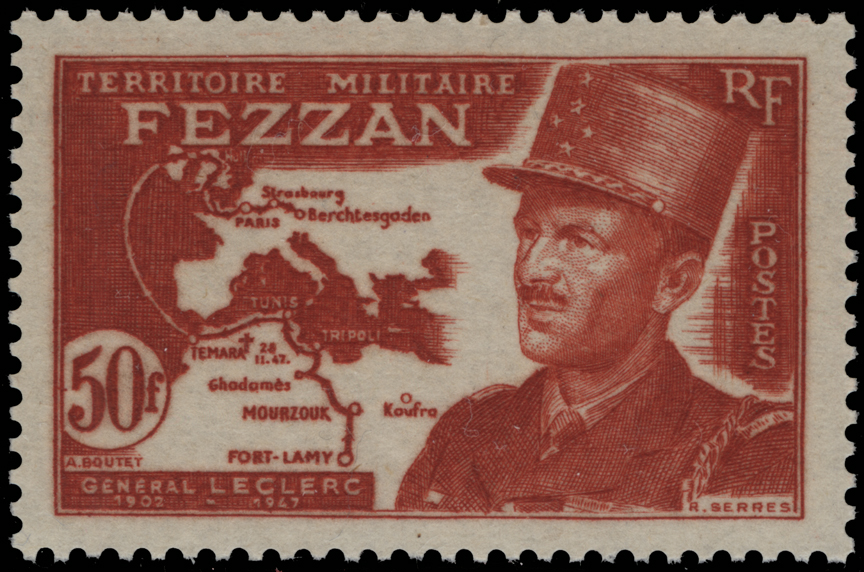
The high value of the 1949 issue for French Occupied Fezzan in southern Libya depicts
General Leclerc and shows the progress of his campaign from Chad to Germany.
Bibliography
"Philippe Leclerc: The French Desert Fox." The Warfare History Network. n.d. Sovereign Media.
warfarehistorynetwork.com/2018/12/29/philippe-leclerc-the-french-desert-fox/.
"Reunion." Standard Postage Stamp Catalogue 2016. Sidney, Ohio: Amos Publications, 2015: vol.2.
Direct comments, questions and corrections to:
stampquestions@hotmail.com
© Grose Educational Media, 2021
|